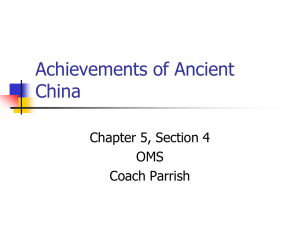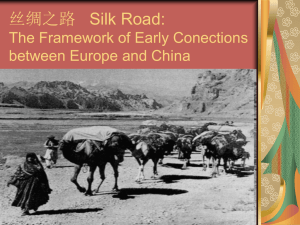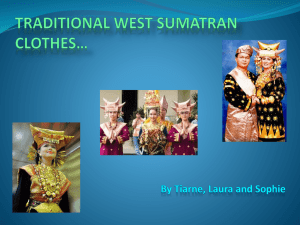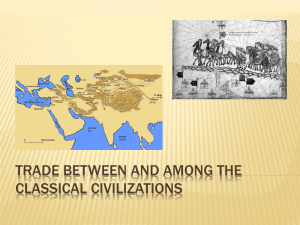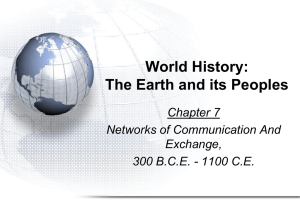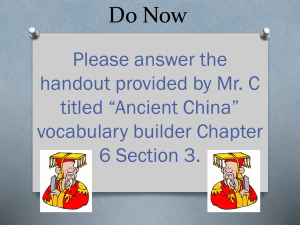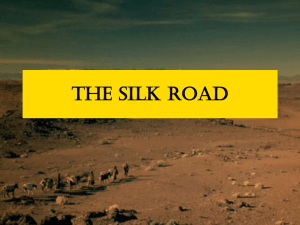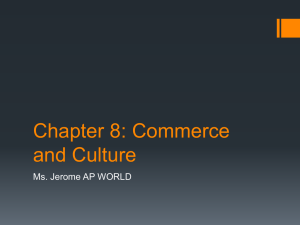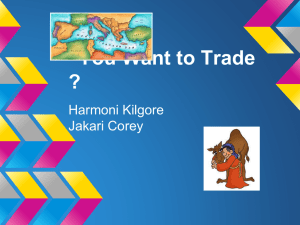silkroad
advertisement
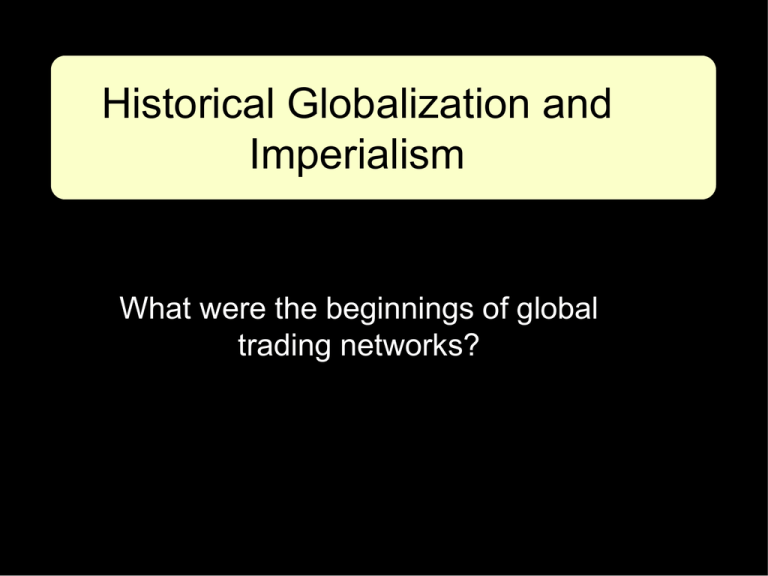
Historical Globalization and Imperialism What were the beginnings of global trading networks? Globalization has deep historical roots Modern globalization came from international: •trading •networks and •mercantilism The Silk Road: Linking Europe and Asia Through Trade • The Silk Road is the most wellknown trading route of ancient Chinese civilization. • Trade in silk grew under the Han Dynasty ( 202 BC - AD 220) in the first and second centuries AD. The Silk Road • Originally, the Chinese traded silk within their empire. Caravans from the empire's interior would carry silk to the western edges of the region. • Often small Central Asian tribes would attack these caravans hoping to capture the traders' valuable commodities. • As a result, the Han Dynasty extended its military defenses further into Central Asia from 135 to 90 BC in order to protect these caravans. The Silk Road • Chan Ch'ien, the first known Chinese traveler to make contact with the Central Asian tribes came up with the idea to expand the silk trade to include these tribes and forge alliances with these Central Asian nomads. • Because of this idea, the Silk Road was born. Camels rest outside of the ancient Silk Road town of Kuche in the Xinjiang Autonomous Region. The bleak desertscapes extend beyond the horizon, calling to mind the hardships and determination of those who traveled the Silk Road. The Silk Road The route grew with the rise of the Roman Empire because the Chinese initially gave silk to the Roman-Asian governments as gifts. The Silk Road • The 7000 mile route spanned China, Central Asia, Northern India, and the Parthian and Roman Empires. • It connected the Yellow River Valley to the Mediterranean Sea and passed through places such as Chinese cities Kansu and Sinkiang and present-day countries Iran, Iraq and Syria. DID YOU KNOW??? • Chinese rulers of successful dynasties kept secret the mystery of silk production. • Compare and contrast this situation with modern transnational corporations taking out patents to protect their right to profit from their research? Social Consequences of the Silk Road • increased the number of foreign merchants present in China under the Han Dynasty exposing the Chinese people to different cultures and religions. • Example: Buddhism spread from India to China because of trade along the Silk Route The Decline of the Silk Road • The Chinese traded silk for medicines, perfumes, and slaves in addition to precious stones. • As overland trade became increasingly dangerous, and overseas trade became more popular, trade along the Silk Road declined. • While the Chinese did maintain a silk-fur trade with the Russians north of the original Silk Route, by the end of the fourteenth century, trade and travel along the road had decreased. READ “The Silk Road: Early Globalization” pg. 125-128 and answer the • Writtenfollowing recordsquestions… show that many different peoples lived, traveled, and traded along the length of the Silk Road including the Chinese, Turks, Mongols, Middle Eastern Christians, Western Europeans and Persians. • How would this form of historical globalization affect people socially, culturally and economically? Give examples of each. • Do you see a parallel to the present day? How so?

